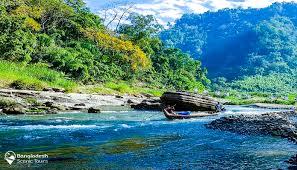Exploring the Ancient Temples of Bagan

When travelers think of Myanmar, their minds often drift to the mystical plains of Bagan. This historic city, home to thousands of temples, pagodas, and monasteries, offers an experience unlike any other in Southeast Asia. Whether you’re a history buff, a photographer, or simply someone in search of cultural immersion, Bagan delivers a sense of wonder that stays with you long after you leave.
In this guide, we’ll dive into the history of Bagan, the best temples to visit, how to explore them, and practical tips to make your journey as enriching as possible.
A Brief History of Bagan
Bagan flourished as the capital of the Pagan Kingdom between the 9th and 13th centuries. During this golden era, over 10,000 temples and religious structures were built across the plain. Today, about 2,000 of them remain, creating a vast open-air museum that has earned UNESCO World Heritage status.
The temples were not just religious centers but also reflections of Myanmar’s architectural brilliance, artistry, and devotion. Walking among them feels like stepping back into a time when Buddhism was shaping not just spiritual life but the entire cultural fabric of the region.
The Magic of Sunrise and Sunset
One of the defining experiences in Bagan is witnessing sunrise or sunset over the temple-studded landscape. At dawn, a golden haze blankets the horizon as hot air balloons float gently above. The sight of countless pagodas emerging from the mist is nothing short of breathtaking.
Sunset, too, casts a warm glow over the temples, creating dramatic silhouettes against the sky. While climbing some temples used to be permitted, most are now closed for preservation. Instead, dedicated viewing platforms and nearby hills provide excellent vantage points.
Must-See Temples in Bagan
While you could easily spend weeks exploring Bagan, here are some highlights every traveler should consider:
1. Ananda Temple
Known as the “Westminster Abbey of Bagan,” Ananda is one of the most revered and well-preserved temples. Its golden spire glistens in the sun, and the interior houses impressive Buddha statues.
2. Shwezigon Pagoda
This shimmering golden stupa is one of the earliest prototypes for Myanmar’s later pagodas, including the famous Shwedagon in Yangon. It’s a deeply spiritual site often visited by locals.
3. Dhammayangyi Temple
The largest temple in Bagan, Dhammayangyi is known for its imposing size and mysterious history. Its brickwork is considered the finest in Bagan.
4. Thatbyinnyu Temple
Standing tall at over 60 meters, this temple offers a commanding presence on the plains. Its name translates to “Omniscience,” symbolizing Buddha’s wisdom.
5. Sulamani Temple
Often referred to as the “Crown Jewel,” Sulamani blends fine brickwork with intricate interior frescoes that showcase Bagan’s artistic excellence.
Ways to Explore Bagan
The temples of Bagan span a vast plain, so choosing how to get around is part of the adventure.
-
E-Bikes: Renting an electric scooter is the most popular way to explore. They’re easy to use and allow you to access smaller, off-the-beaten-path temples.
-
Horse Cart Rides: A more traditional way to see the temples, though slower, offers a unique cultural experience.
-
Hot Air Balloon: For those willing to splurge, a sunrise balloon ride provides an unforgettable bird’s-eye view of the landscape.
-
Bicycles: A budget-friendly option if you’re comfortable navigating sandy paths and long distances.
-
Private Cars: Ideal if you want convenience and air-conditioning during the hotter months.
Tips for an Enriching Visit
Dress Respectfully
Temples are active religious sites. Visitors should dress modestly, covering shoulders and knees. Shoes must be removed before entering.
Bring a Flashlight
Many temples have dark interior passages with murals worth seeing. A small flashlight can help you appreciate the details without relying on your phone.
Hire a Local Guide
A knowledgeable guide can bring history to life with stories, legends, and insights you wouldn’t get otherwise. It also helps support the local community.
Stay Hydrated
Bagan can get extremely hot, especially from March to May. Carry water with you and take breaks in shaded spots.
Explore at Different Times of Day
The temples change character depending on the light. Morning is cooler and less crowded, while afternoons provide warmer hues for photography.
Beyond the Temples
While the temples are the main draw, Bagan offers much more.
-
Local Markets: Wander through Nyaung-U Market, where you can find fresh produce, spices, textiles, and handicrafts.
-
Lacquerware Workshops: Bagan is famous for its traditional lacquerware. Visiting a workshop gives insight into this intricate art form.
-
Irrawaddy River: A sunset boat ride along the river offers a tranquil perspective on Bagan’s landscape.
Practical Travel Information
Getting There
Bagan is accessible by air, bus, or train. The nearest airport is Nyaung-U, with domestic flights from Yangon, Mandalay, and Heho (near Inle Lake). Buses are the most economical option, though overnight rides can be long and tiring.
Accommodation
From budget hostels to luxury resorts, Bagan offers a wide range of lodging options. Staying in Old Bagan keeps you close to the temples, while Nyaung-U and New Bagan offer more dining and nightlife choices.
Entrance Fee
There is a Bagan Archaeological Zone fee, which helps fund preservation efforts. The ticket is valid for multiple days, giving you flexibility in your exploration.
When to Visit
The best time to visit Bagan is from November to February, when the weather is cooler and drier. This period also coincides with the hot air balloon season. March through May can be extremely hot, while June to October brings heavy rains that can make travel more challenging.
Responsible Tourism
Bagan’s temples are fragile and centuries old. It’s important to respect preservation efforts:
-
Avoid climbing unauthorized structures.
-
Do not touch or lean on ancient murals.
-
Support local businesses by buying from artisans and hiring guides.
Tourism can bring great benefits to the region if travelers are mindful and respectful.
Preparing Before You Go
Before booking your trip, it’s wise to look into entry requirements. Visa regulations can change, and ensuring you have the right paperwork makes your journey smooth. Resources such as a Myanmar Tourist Visa guide can help you understand the process and avoid last-minute issues.
Final Thoughts
Exploring the ancient temples of Bagan is not just about sightseeing; it’s about immersing yourself in a landscape that tells the story of devotion, artistry, and resilience. Each temple, whether grand or modest, carries a piece of Myanmar’s soul.
As you wander through the plains, you’ll realize that Bagan isn’t simply a destination—it’s an experience that connects you to history, spirituality, and the beauty of human creativity. From sunrises that take your breath away to quiet moments in hidden temples, Bagan promises memories that last a lifetime.





